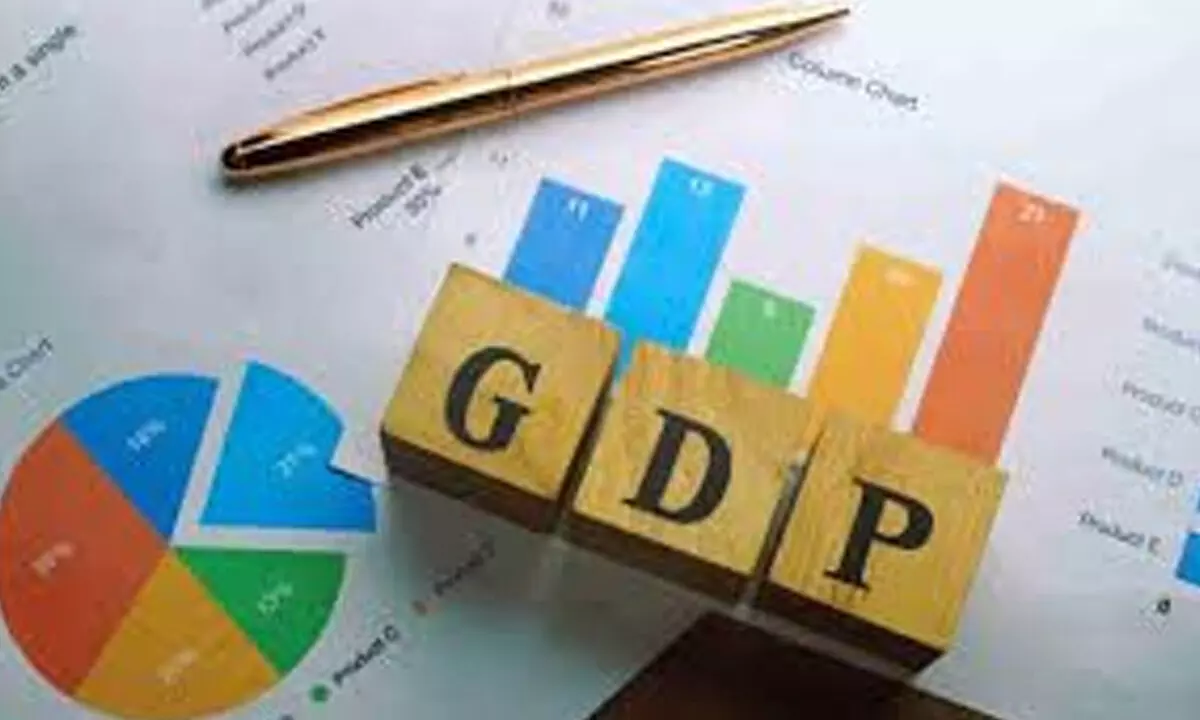Live
- They always want me to win, and now I feel lucky to have been offered a story like ‘Zebra’: Satyadev Kancharana
- ‘Democracy first, humanity first’: PM Modi in Guyana's parliament on two countries' similarities
- PKL Season 11: Telugu Titans register third straight win to top standings
- Is Pollution Contributing to Your COPD?
- NASA Unveils Underwater Robots for Exploring Jupiter's Moons
- Additional Central forces arrive in violence-hit Manipur
- AR Rahman and Saira Banu’s Divorce: Legal Insights into Common Issues in Bollywood Marriages
- 82.7 pc work completed in HPCL Rajasthan Refinery area: official
- Curfew relaxation extended in 5 Manipur districts on Friday
- Tab scam prompts Bengal govt to adopt caution over fund disbursement
Just In

Rise in govt investment comes at expense of fall in investments
Thiruvananthapuram: A study paper on India’s economic growth underscores that the slow recovery from the pandemic, dominance of non-productive sectors in driving growth, and imbalanced investment patterns should make one pause and reconsider the growth strategy before celebrating.
The paper of L T Abhinav Surya of the prestigious Centre for Development Studies here points out that people are buzzing about India’s economic growth predictions for 2023-24, expecting a good year ahead after experts from the RBI and IMF have backed this optimism, projecting a solid 6.5 per cent and 6.3 per cent growth, respectively.
“Recent figures on the country’s Gross Domestic Product (GDP) in the first half of 2023-24 seem promising, showing a robust 7.7 per cent growth compared to the previous year. Many are praising India as a key player in the global economic rebound post-pandemic”.”However, diving deeper into these numbers calls for a more realistic view.
India’s share of the world GDP has increased from 3.25 per cent in 2019 to 3.39 per cent in 2022, a rise of 14 basis points.On the other hand, between 2016 and 2019, it increased by 24 basis points, from 3.01 per cent to 3.25 per cent.Hence, the growth rate hasn’t been significantly higher post-pandemic compared to before.
Moreover, there are concerns about persistently high unemployment rates, rising inflation, and other social and economic issues that don’t always get highlighted in these big headline numbers,” states Surya’s study.
Looking into the growth in perspective, he points out that the country’s GDP took a hit before and during the pandemic, so the current spike in growth isn’t entirely unexpected.”When we look closely at the numbers, the annual GDP growth rate has been a sluggish 3.27 per cent between 2019-20 and 2022-a. This indicates a slow recovery from the COVID-19 shock. Even comparing the GDP between the first half of 2023-24 and 2019-20, the average growth rate has been only 3.65 per cent. So, while the recent numbers seem impressive, they are not as remarkable when we consider the bigger picture”.
What’s worrisome is that the share lost by the primary sector has been absorbed mainly by the finance and the real estate sector, which many experts consider non-productive. Its share has risen from 18.9 per cent in 2011-12, to 21.9 per cent on the eve of the pandemic in 2019-20, to 22.5 per cent in 2022-23. This means the value created in other sectors often ends up being redirected into these areas without creating new value. This trend has continued even during the pandemic, with this sector showing growth while others struggled.
Even during first half of 2023-24, with an 8.8 per cent year-on-year growth, this sector has been leading the rebound in growth. This shift should be a cause for concern rather than celebration.The study adds that some might highlight the growth in the manufacturing sector post-pandemic, but it must be remembered that it had already seen a downturn before the pandemic hit. Adjusting for this, the actual annual growth rate of 3 per cent between 2018-19 and 2022-23 and 3.76 per cent between the first half of 2018-19 and 2023-24, isn’t as high as it might seem.
This is also reflected in the manufacturing sector’s Index for Industrial Production (IIP), whose growth rate has been much lower in comparison to the pre-pandemic period. Hence, the numbers indicate that the non-productive sectors are the ones driving the recovery.

© 2024 Hyderabad Media House Limited/The Hans India. All rights reserved. Powered by hocalwire.com







